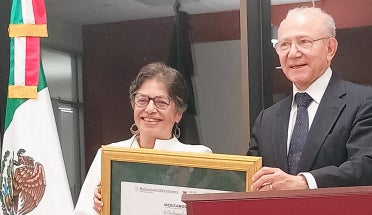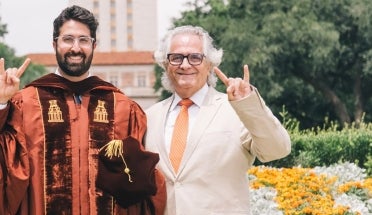
UT Researchers Work with NASA to View Oldest Galaxies via James Webb Telescope
- Sep 29, 2022
Two images from NASA’s James Webb Space Telescope have shown what may be among the earliest galaxies ever observed. Both include objects from more than 13 billion years ago.
The images represent some of the first from a collaboration of astronomers and academic researchers — including the Department of Astronomy and the Texas Advanced Computing Center (TACC) at The University of Texas at Austin — who are teaming with NASA and global partners to uncover new insights about the universe.
Associate Professor of Astronomy Steven Finkelstein is principal investigator for the Cosmic Evolution Early Release Science Survey (CEER), from which these images were taken. The CEERS Collaboration is composed of 18 co-investigators from 12 institutions and more than 100 collaborators from the U.S. and nine other countries.
Before the telescope data came in, Micaela Bagley, a postdoctoral researcher at UT Austin and one of the CEERS imaging leads, led a group processing the real images so the data could be analyzed by the whole team. TACC hosted a presentation by Bagley on September 30 at its TACC Symposium for Texas Researchers.
Researchers used supercomputers at TACC for the initial image processing: Stampede2 was used to remove background noise and artifacts, and Frontera, the world’s most powerful supercomputer at a U.S. university, was used to stitch together the images to form a single mosaic.
“High-performance computing power made it possible to combine myriad images and hold the frames in memory at once for processing, resulting in a single beautiful image,” Finkelstein said.
Webb’s primary mirror is about seven meters in diameter, dwarfing any other telescope in space and most on the ground. Webb is 10 times as powerful as the Hubble Space Telescope, allowing it to pull in fainter galaxies from all epochs of cosmic time — from here to almost infinity.
“It’s amazing to see a point of light from Hubble turn into a whole, beautifully shaped galaxy in these new James Webb images, and other galaxies just pop up out of nowhere,” Finkelstein said.



